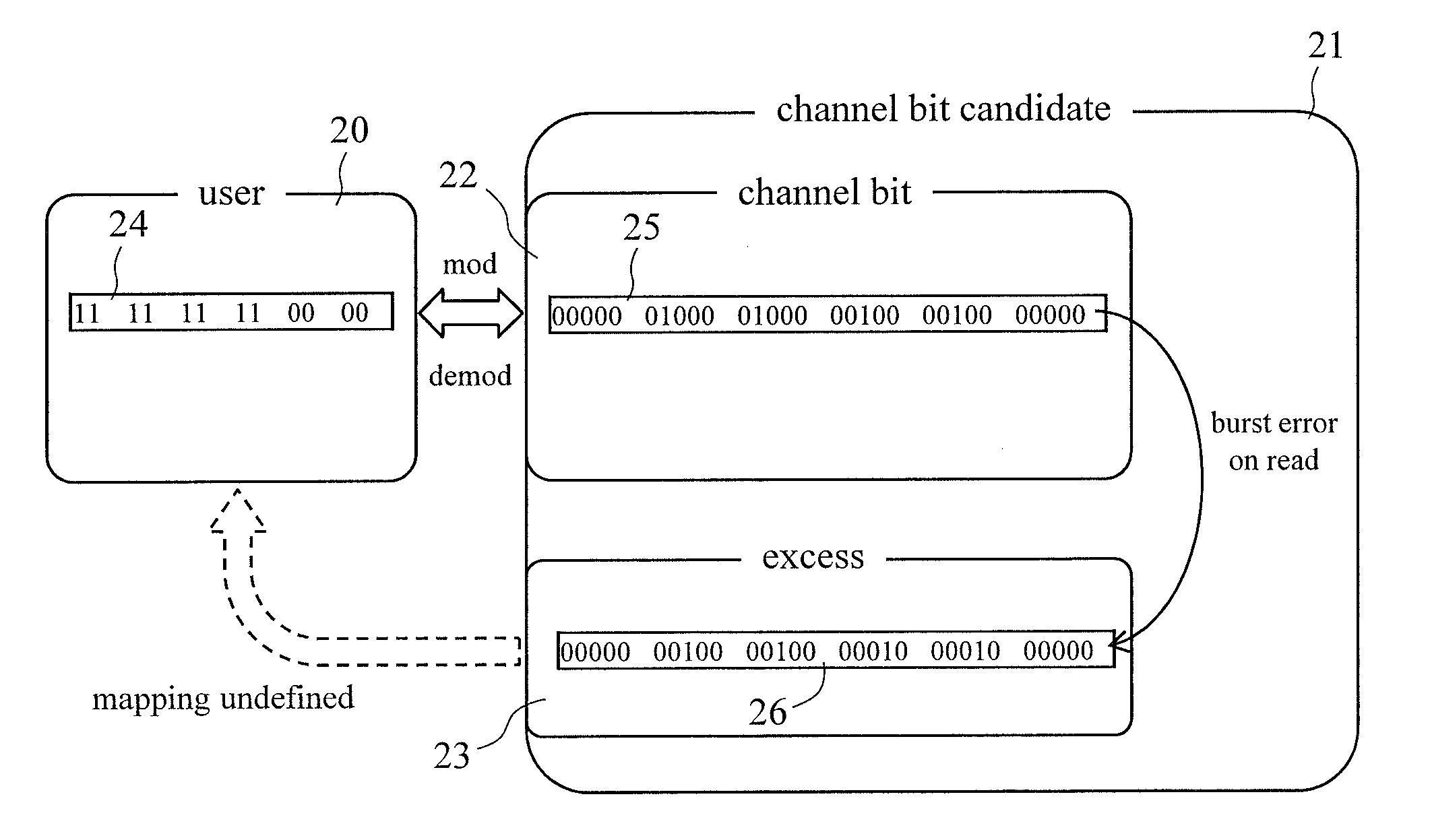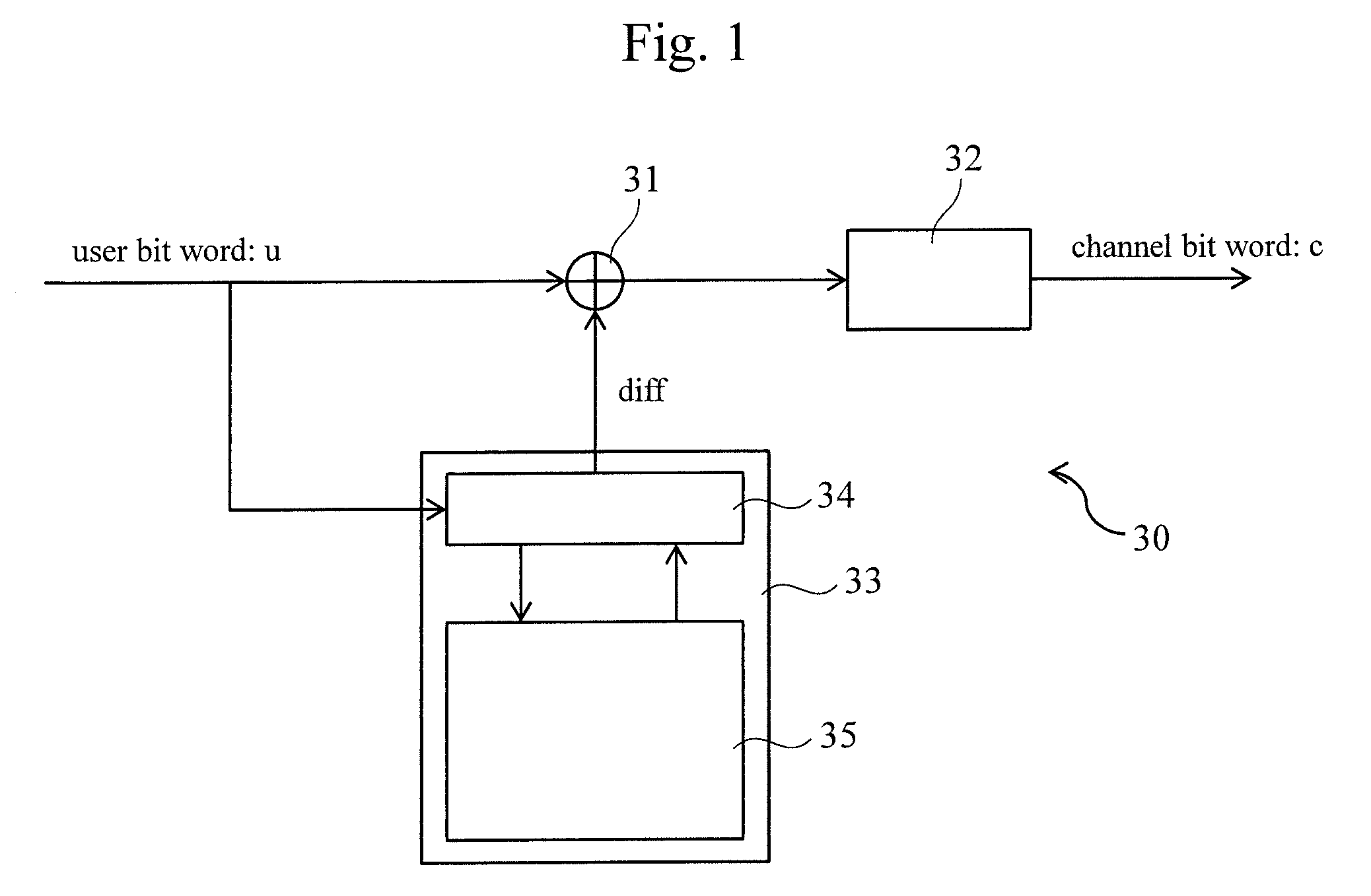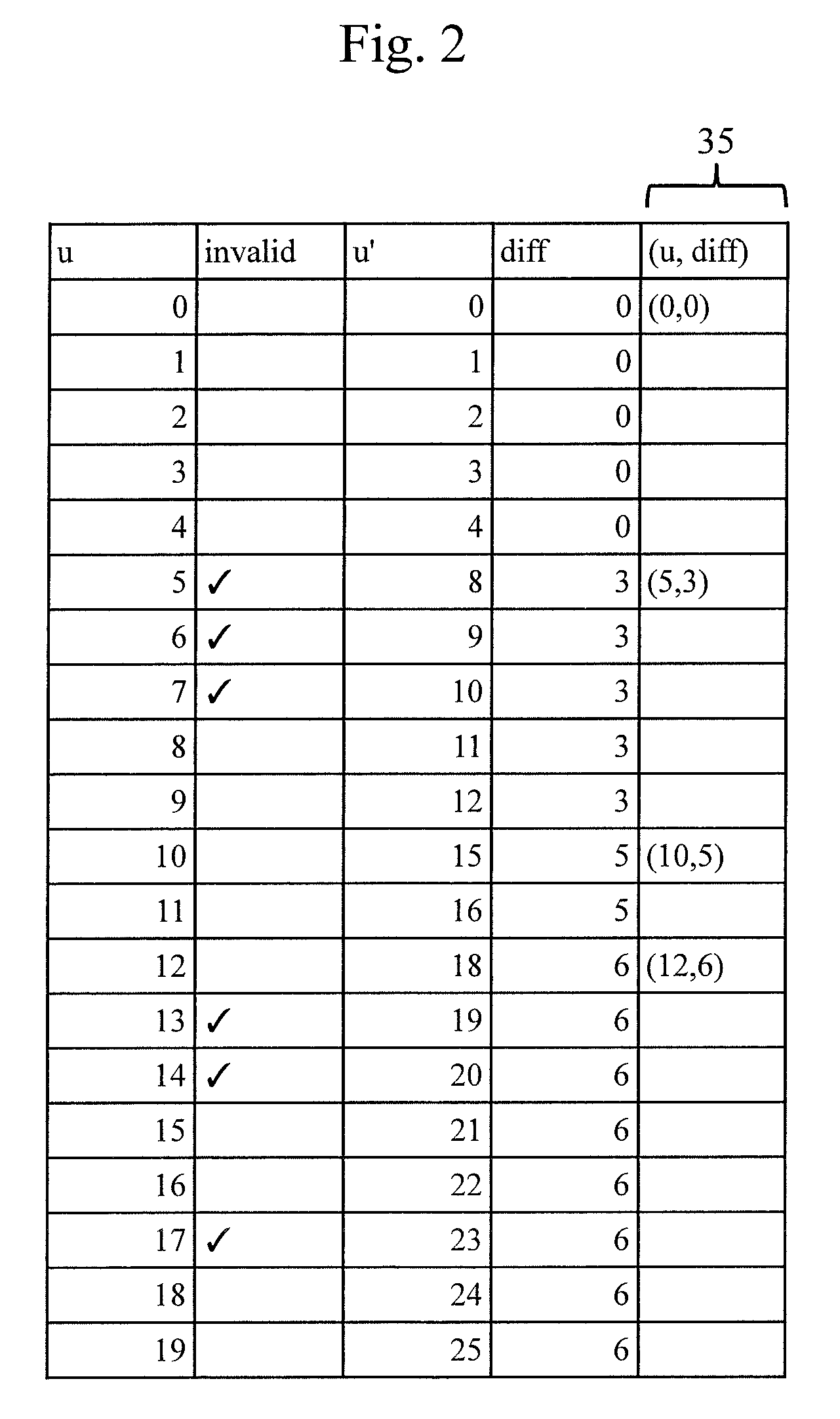Channel bitword processor, PRML decoder, and optical information recording/reproducing device
a bitword processor and optical information technology, applied in the field of recording information using light, can solve the problems of reducing the resolution of short marks or spaces, the resolution of the recording medium cannot be efficiently utilized, and the na of the objective lens is increasing, so as to achieve the effect of simplifying descriptions, reducing the resolution of the recording medium, and increasing the linear recording density
- Summary
- Abstract
- Description
- Claims
- Application Information
AI Technical Summary
Benefits of technology
Problems solved by technology
Method used
Image
Examples
embodiment 1
[0041]FIG. 1 is a block diagram of a channel bit word processor 30 according to the The channel bit word processor 30 implements the technical concept above. The channel bit word processor 30 comprises an adder 31, a channel bit word generator 32, and an offset calculator 33. The offset calculator further includes a searcher 34 and an avoidance list 35. Details of those components will be described later.
[0042]FIG. 2 is a diagram showing a configuration and a data example of the avoidance list 35. In order to facilitate understanding, other data related to the avoidance list 35 is described along with it. Each column is, from the leftmost column: user bit word number of a user bit word u; invalid flag that indicates whether the run-length limitation of u is violated (if this column is checked, u violates the limitation); a value calculated by adding a word number offset diff is added to the user bit word number of u; the word number offset diff; a value registered into the avoidanc...
embodiment 2
[0052]Then in the present invention, a configuration will be described that suppresses such error propagations. Firstly, specific examples of errors will be described. Then a configuration example for suppressing error propagations will be described.
[0053]Code modulation achieves several functions such as an effect of improving linear recording density, an effect of preventing excessive continuation of 0 or 1, and the like. In optical discs, it is the most important to improve, by limiting run-length in code modulation processes, linear recording density using code modulations without shrinking spot diameters. 1-7PP code with run-length of 1, which is used in BD, achieves a linear density that is four-third times larger than that of without code modulation.
[0054]A linear recording density improved ratio E using run-length limit code is expressed by Equation 1 below. d and C are the minimum run-length and the capacity, respectively.
E=(d+1)C (Equation 1)
[0055]C is expressed by Equati...
PUM
| Property | Measurement | Unit |
|---|---|---|
| bit length | aaaaa | aaaaa |
| channel bit length | aaaaa | aaaaa |
| length | aaaaa | aaaaa |
Abstract
Description
Claims
Application Information
 Login to View More
Login to View More - R&D
- Intellectual Property
- Life Sciences
- Materials
- Tech Scout
- Unparalleled Data Quality
- Higher Quality Content
- 60% Fewer Hallucinations
Browse by: Latest US Patents, China's latest patents, Technical Efficacy Thesaurus, Application Domain, Technology Topic, Popular Technical Reports.
© 2025 PatSnap. All rights reserved.Legal|Privacy policy|Modern Slavery Act Transparency Statement|Sitemap|About US| Contact US: help@patsnap.com



